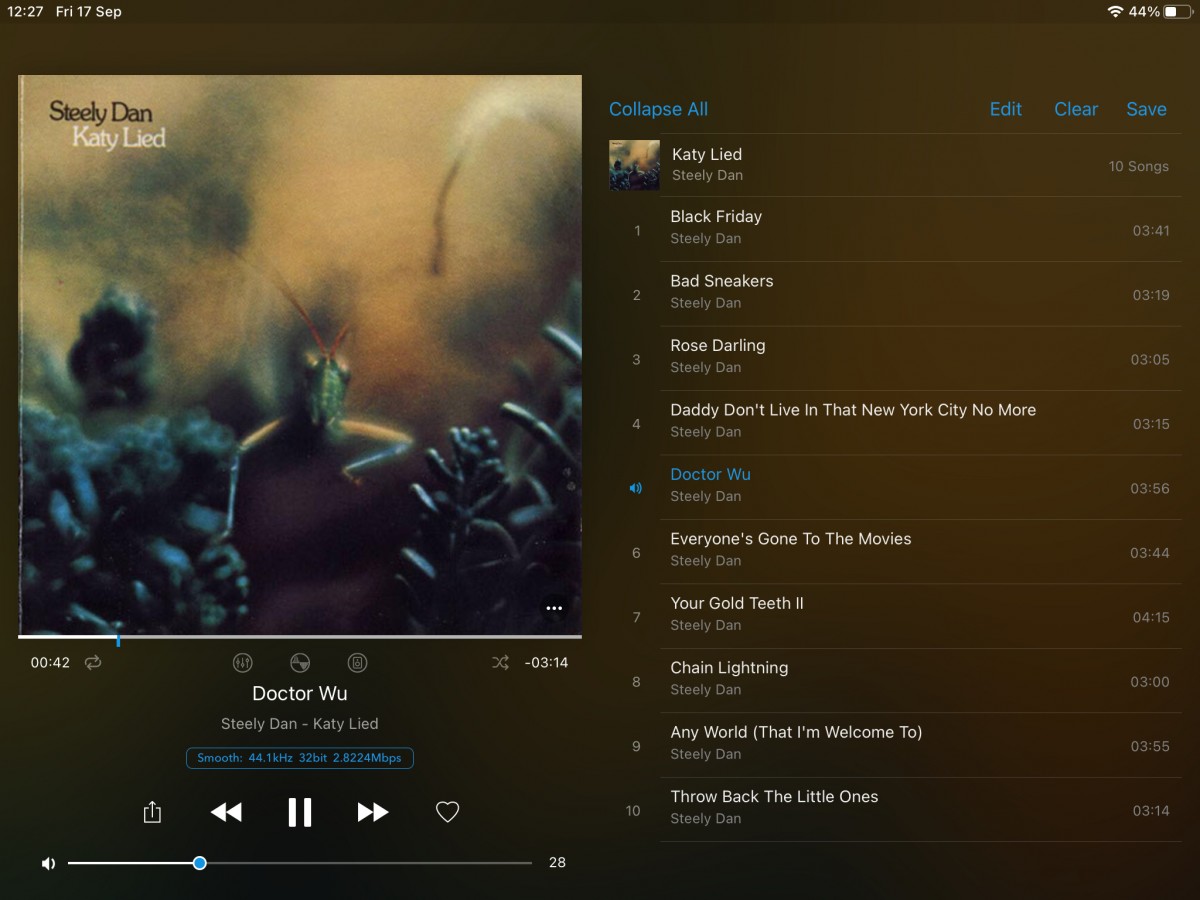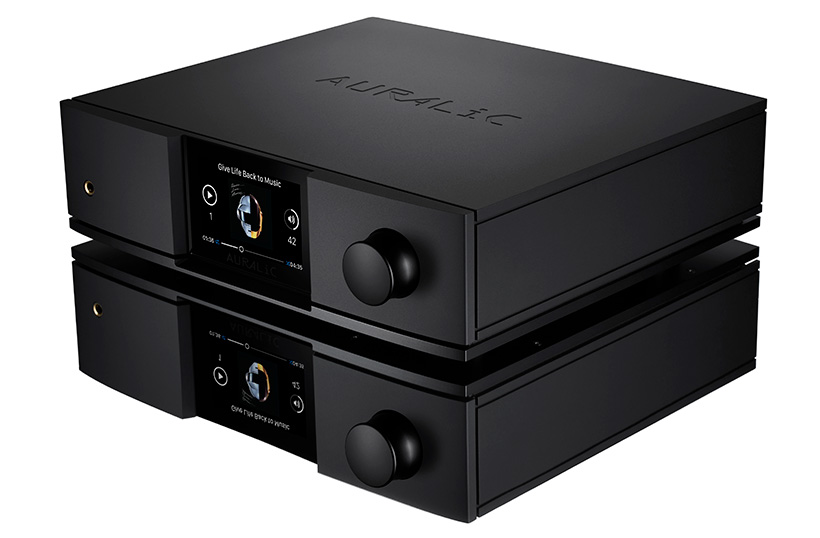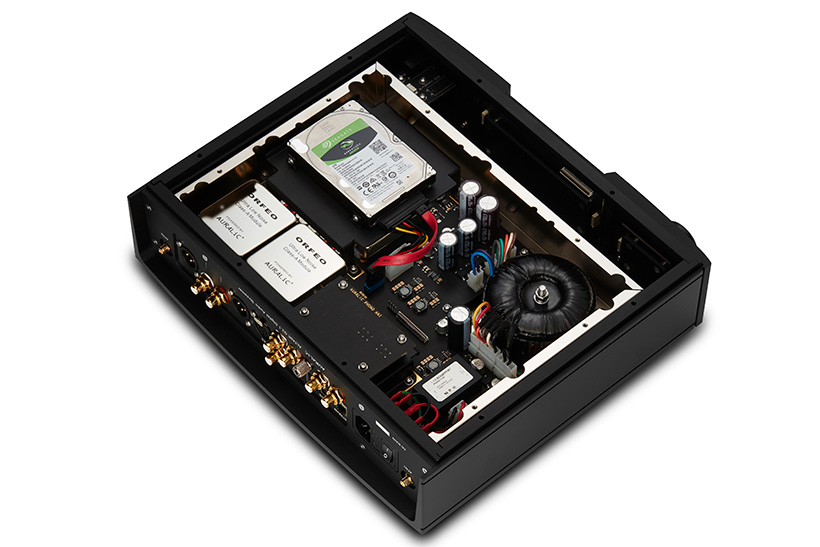Newcomers to the Auralic brand can be forgiven for finding their range of near identical components a little confusing, the external differences come down to details of construction and the colour of controls. In essence it seems that the more ambitious products are entirely black and weigh more than the more affordable options. All of the upper range G2.1 models share the so called Unity Chassis II casework where you see a distinct gap between the base and the rest of the box and a lip underneath the display. Where things get less clear is that some of these have Auralic’s Lightning server onboard and some don’t, the new Altair G2.1 however does have the Lightning server, in fact it has more features than any previous G series product from the brand.
The Altair G2.1 is a DAC, streamer and preamplifier with headphone amp and phono stage, the latter being a first for Auralic and a sign of the vinyl obsessed times. It only has one line input but this is backed up with the full gamut of digital inputs including USB which is a rare feature on a streamer. It can be connected to the network over ethernet or wirelessly and, controversially, Auralic CEO Xunqian Wang recommends the wireless approach on sound quality grounds.

Inside the box you find another case but this one is made of copper, a material chosen for its shielding qualities, this helps to protect the electronics from radio frequencies and thus keeps the noise floor of the system low. This is the key to getting a result from digital electronics, it’s the noise floor that swallows up the quieter sounds, you don’t hear this as noise but it makes the sound harder and colder and masks the fine details that are essential for genuine high resolution. The electronics include femto clocks to minimise jitter, a class A output stage and the so-called Purer-Power power supply. This and the digital circuitry mean that the Altair G2.1 can cope with DSD512, 32-bit/384kHz PCM and all the useful digital formats. It can receive the usual streaming services except the new Tidal Connect, and has wifi receivers for Airplay and Bluetooth.
The system can be controlled with Roon (with a separate Roon core) but Auralic’s Lightning DS (iOS only) is very good and totally free. The control app is a key part of any streaming device and those that rely on third party UPnP systems are rarely as good as those with dedicated apps, Lightning DS is very much in the latter camp and both looks good and makes it easy to find and play your music on that on Qobuz or Tidal. The only drawback with Lightning Server is that it needs to trawl through your music collection and collect metadata before you can access the material, this doesn’t take long however and if you set it to automatically update once a week or everyday it will keep up to date with new additions to the library.

Lightning DS also has a broad range of features hidden within its additional operations menu, these include parametric equalisation options, resampling options, speaker placement compensation, output level reduction in two stages, channel balance, filter mode selection from a choice of four and display brightness among others. Some of these features can be easily switched on and off from the play screen which is handy if you want to hear what they do without delving into the menu. The same screen reveals that the DAC upsamples to 32-bit by default and shows the original bit and sample rate as well as what’s actually being processed. If you want to use the Altair G2.1 as a preamplifier it helps to have a remote control, Auralic don’t provide one but it will learn the commands from pretty well any IR remote you have if you teach it by using the display on the machine. This is a tricky if your eyesight isn’t perfect but I had the patience to teach it the volume and on/off commands from an ATC handset, longer term users would benefit from getting a few more options covered.
Sound quality
I have reviewed a number of the G2.1 components from Auralic in the past and always get good results with them, the Altair proved to be in the same league. It doesn’t have the finesse of the separate Aries streamer and Vega DAC as you would expect but enjoys the same evenness of balance and transparency to the many facets of music. Bass weight is superb for instance, this is because it delivers depth and scale from the bass as well as it does from higher frequencies, and the background noise level is vanishingly low, quieter music is just as compelling as more bombastic types, nuances of playing and singing are subtly rendered and enthralling.

The new Dan Berkson album Dialogues contains keyboard lead jazz that harks back to the ‘60s with a modern production and some lovely detailing, it’s not immediate or obvious music and takes a little while to seep in but with the Altair that happens very easily and before you know it there’s a three dimensional soundstage in front of you with the various instruments placed almost structurally within it. But it’s the groove that keeps things interesting, and this streamer is equal to delivering it on time without smearing the fine divisions between notes and overlapping instruments. Another and obviously popular way to listen is to put something on in the background and see how it fares, I did this with Patricia Barber’s Live: A Fortnight in France, and very much enjoyed the way it sounded so good without being the focus of attention. Not all systems can do this well and either fail to make much impression or are too much in the foreground, the Altair fitted nicely in between.
I decided to try out the DAC direct by connecting the USB output of a Melco N10 to the relevant input on the Altair, this also means that the Twonky server software on the Melco is managing the process rather than the Lightning server in the Altair. I was surprised to find that the timing improved and the image scale grew via this route, it might partly be because the CAD USB cable is distinctly more pricey than the Audioquest Cinnamon ethernet but the next step suggested otherwise. This was the point that I went into the settings and switched from wired to wireless streaming, going back to the Lightning server but picking up the data with an aerial on the back of the Altair. A signal which had to pass through two lengths of not very special ethernet to an Apple Airport Express wireless access point before being transmitted to the streamer a few metres away.

This produced a result that was very close to USB and clearly superior to the wired ethernet option. It was one of those ‘who’d a thunk it’ moments when you have to question what’s going on, but continued listening confirmed that this was the most enjoyable way to use the Altair. The main beneficiary being timing which wasn’t too sloppy to begin with but made the music impossible to put down after the change. Producing all the drive and energy of live recordings with a balance that while not quite as relaxed as good USB was close enough to make me wonder which is closest to neutral. It certainly revealed an awful lot of detail in a totally coherent fashion and exposed characteristics of recordings that have not been so apparent in the past. The Grateful Dead’s Cumberland Blues (Europe ’72) gets pretty dense at its climax and the tape compression is obvious, Christian Scott’s relatively recent Angola, L.A. and the Fifth Amendment (Yesterday You Said Tomorrow) by contrast seems to go down in volume and scale when things get intense, possibly in an effort not to overload the recording.
Listening thus far was via the Townshend Allegri Reference passive preamplifier, switching to the volume control on the Altair proved surprisingly painless, there are losses in detail resolution as is always the case but timing and tonal balance remained very close. I had to drop the output by 6dB to be able to use any range with relatively sensitive B&W 802 loudspeakers but that was straightforward enough. If you have a dedicated preamplifier it’s likely to remain in the system but for those wanting to get up and running the onboard volume control alongside line and phono inputs is not going to hold things back.

I wasn’t able to try it with an onboard hard drive (shown above) but in the past at least it has been possible to use Auralic streamers with music files stored this way and that delivered excellent results. A drive kit costs £100 and you can use the SSD or HDD or your choice, and as these start at around £200 for 2TB of SSD it’s a cost effective way to store your music without compromising sound quality.
The Altair G2.1 is a fine allrounder, its strengths lie where Auralic usually shines, in streaming and digital to analogue conversion, in this respect it’s a serious contender for your budget at the price. You don’t get the Lightning Link option found on more dedicated G2.1 units but you do get almost everything most listeners need in a single, superbly executed product. What’s more it works beautifully without an ethernet cable. But ultimately it’s about the sound quality delivered with digital files and that is in the premier league.


